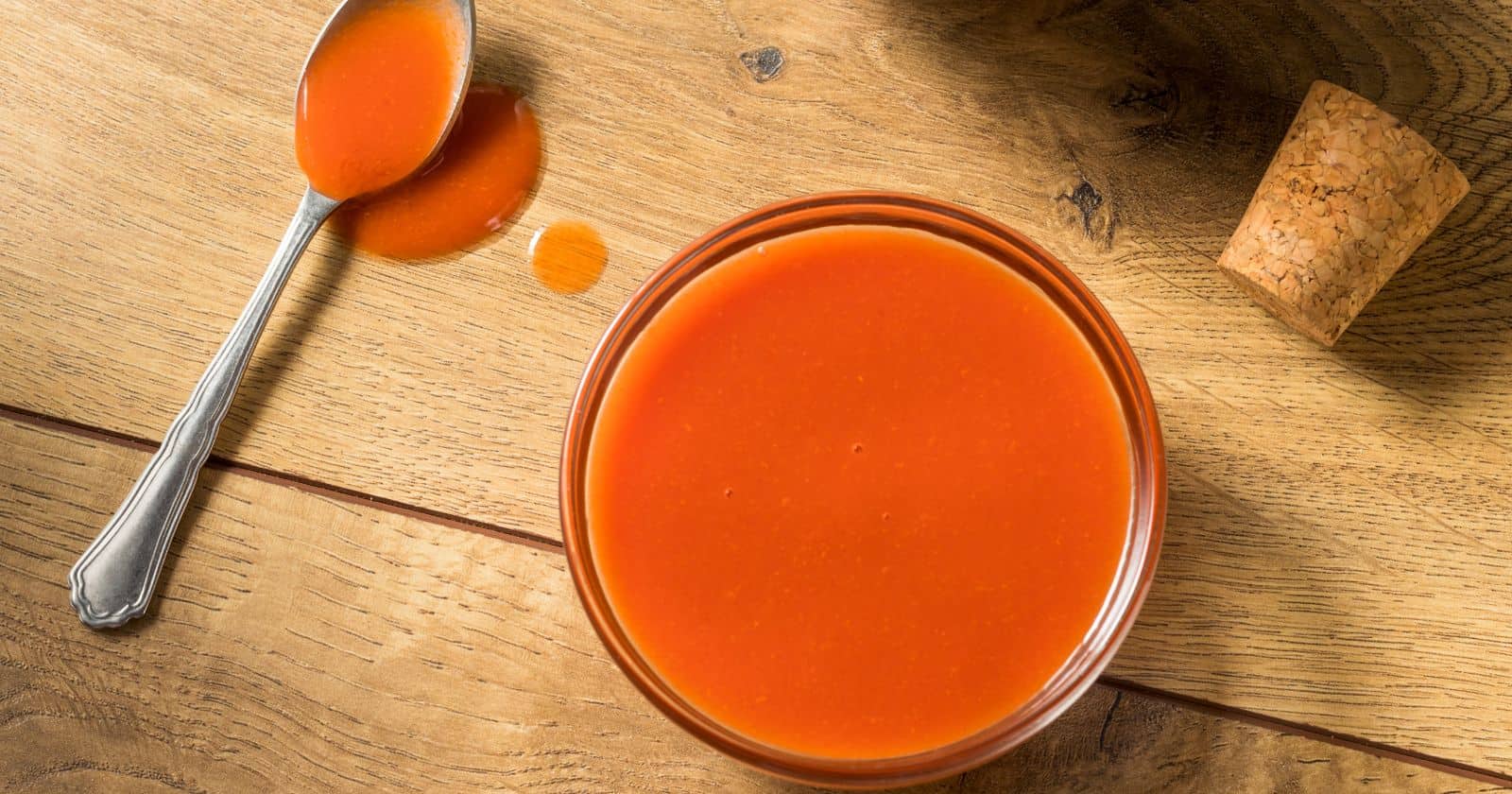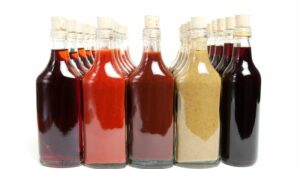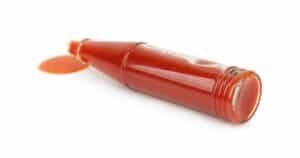For spicy food lovers, a great hot sauce can make any dish better. But who has the time and patience for weeks of fermenting and aging? When you want to add some heat to your meal now, fermentation seems like an unnecessary hassle.
Don’t worry, you can absolutely make flavorful homemade hot sauce fast without fermenting. With fresh peppers, herbs, spices and a splash of vinegar, you can create a customized sauce with the perfect amount of heat and tang in no time.
In this article, I’ll share quick and easy ways to craft hot sauce using ingredients you likely have on hand. You’ll learn how to control the spiciness and balance the flavors. With my simple non-fermented hot sauce recipes, you can start enjoying homemade sauce that’s ready in the time it takes to make dinner.
Say goodbye to boring meals by whipping up a customized sauce tonight. Keep reading to get started making hot sauce without the wait of fermentation!
Why Make Hot Sauce Without Fermenting?
Fermentation relies on time for lactic acid bacteria to break down peppers and create tangy flavors. But you can achieve bright, balanced hot sauce without the long process of fermenting.
Here are some benefits of quick homemade hot sauce:
- Ready in under an hour – Make hot sauce as fast as you can cook dinner when you skip fermenting.
- Customize flavors – Craft your own flavor profile using whatever fresh ingredients you like.
- Control spiciness – Get the desired heat level by adjusting amounts of peppers and seeds.
- Use year-round – Make sauce with fresh or frozen peppers so you can enjoy it anytime.
- Easy process – Simply chop, blend and season your hot sauce ingredients.
With a few tricks like adding vinegar and controlling pepper heat, you can create amazing flavor fast without curing.
Tips for Making Non-Fermented Hot Sauce
Ready to make hot sauce that’s ready in record time? Here are my top tips:
Use Fresh or Frozen Peppers
Skip the fermenting step by using fresh chiles or thawed frozen peppers. Cayenne, serrano, jalapeño, and habanero are some good hot sauce varieties.
Roast peppers first to deepen flavors. Thaw frozen ones first for easiest blending.
Add Vinegar or Citrus Juice
To mimic the tanginess that fermenting creates, add vinegar like white, apple cider or rice wine vinegar. Lemon or lime juice also work.
Start with 2-3 tablespoons per cup of blended peppers then adjust acidity to taste.
Control the Heat
Manage spiciness by removing some or all of the seeds and membranes before blending. They contain capsaicin, the source of heat.
Start with half the seeds, blend, then add more for your desired kick. Wear gloves when handling hot peppers.
Include Aromatic Ingredients
Build a flavor base with onions, garlic, herbs like cilantro or basil, spices like cumin or oregano, or sweet fruits.
Sauté aromatics first to strengthen their flavors. Fresh or dried herbs work.
Finish and Adjust the Sauce
Once blended, finish seasoning with extra vinegar, salt, or sugar if needed to balance flavors.
For too much heat, gradually mix in water, stock or neutral oil until desired spiciness is reached.
Easy Non-Fermented Hot Sauce Recipes
Ready to put these tips to work? Here are some of my favorite fast homemade hot sauce recipes:
Classic Chili Sauce
- 2 cups chopped red chili peppers
- 1 small onion, chopped
- 3 garlic cloves
- 1 tablespoon olive oil
- 1/4 cup apple cider vinegar
- 1 teaspoon salt
Sauté onions and garlic in oil. Add peppers and vinegar. Blend until smooth. Season with salt.
Jalapeño Lime Sauce
- 10 jalapeños, seeds removed
- Juice of 2 limes
- Handful cilantro leaves
- 1/2 onion, diced
- 2 garlic cloves
- 1 teaspoon honey
Blend all ingredients. Add water if too thick. Season with salt and extra honey.
Peach Habanero Sauce
- 5 habaneros, some seeds reserved
- 2 peaches, pitted
- 1 small onion
- 2 tablespoons apple cider vinegar
- 1 tablespoon honey
Blend ingredients. Add water if too thick. Season with salt and extra honey/vinegar.
Curried Mango Sauce
- 3 mangoes, peeled and chopped
- 1 onion, diced
- 2 tablespoons lemon juice
- 1 tablespoon curry powder
- 1 teaspoon minced ginger
Sauté onion and ginger. Add remaining ingredients and blend until smooth.
Storing Your Hot Sauce
The best part about quick homemade hot sauce? It stores easily in the fridge for weeks!
- Store hot sauce in sterilized bottles or jars, leaving 1/2 inch headspace.
- Refrigerate after opening. Sauces without vinegar preservatives need fridge storage.
- For longer shelf life, process sealed bottles in a hot water bath for 15 minutes.
- Check for signs of mold before consuming and discard if any appears.
Get Creative with Endless Hot Sauce Options
Now that you know how easy (and fast) it is to blend up homemade hot sauce, you can keep experimenting with more unique flavor combinations.
Try mixing different varieties of peppers. Throw in fruits like mango, pineapple or berries. Infuse flavors with lemongrass, Thai basil, cinnamon, coffee – get creative!
The possibilities are endless for crafting your own signature sauce. All it takes is 20 minutes and a few pantry ingredients.
Forget fermenting – start whipping up easy homemade hot sauces tonight! Your meals are about to get a spicy upgrade.
Frequently Asked Questions
Still have some questions about making hot sauce without fermenting? Here are answers to some common FAQs:
Can I use dried peppers instead of fresh ones?
Yes, you can use dried peppers. Just rehydrate them first by simmering in water for 15-20 minutes until softened.
Is there a substitute for vinegar for the tanginess?
Lemon or lime juice make excellent vinegar substitutes. Some other acidic options are verjus, tamarind paste, or certain fresh berries like currants or sumac.
How long will homemade hot sauce last in the fridge?
Properly stored hot sauce will last 4-6 weeks in the refrigerator. The vinegar and salt help preserve it.
Can I adjust the thickness of the sauce?
Yes, you can thin it out with more vinegar, water, or other liquids until reaching your desired consistency.
How will I know if the hot sauce has gone bad?
Check for signs of mold, fermentation bubbling, very off smells, or a change in color. If you see any of these, it’s best to discard.
What are some serving ideas for homemade hot sauce?
Use it as a marinade, dressing, dip, or drizzle for eggs, meat, fish, sandwiches, pizza, tacos, soups, stews, and more! The possibilities are endless.





